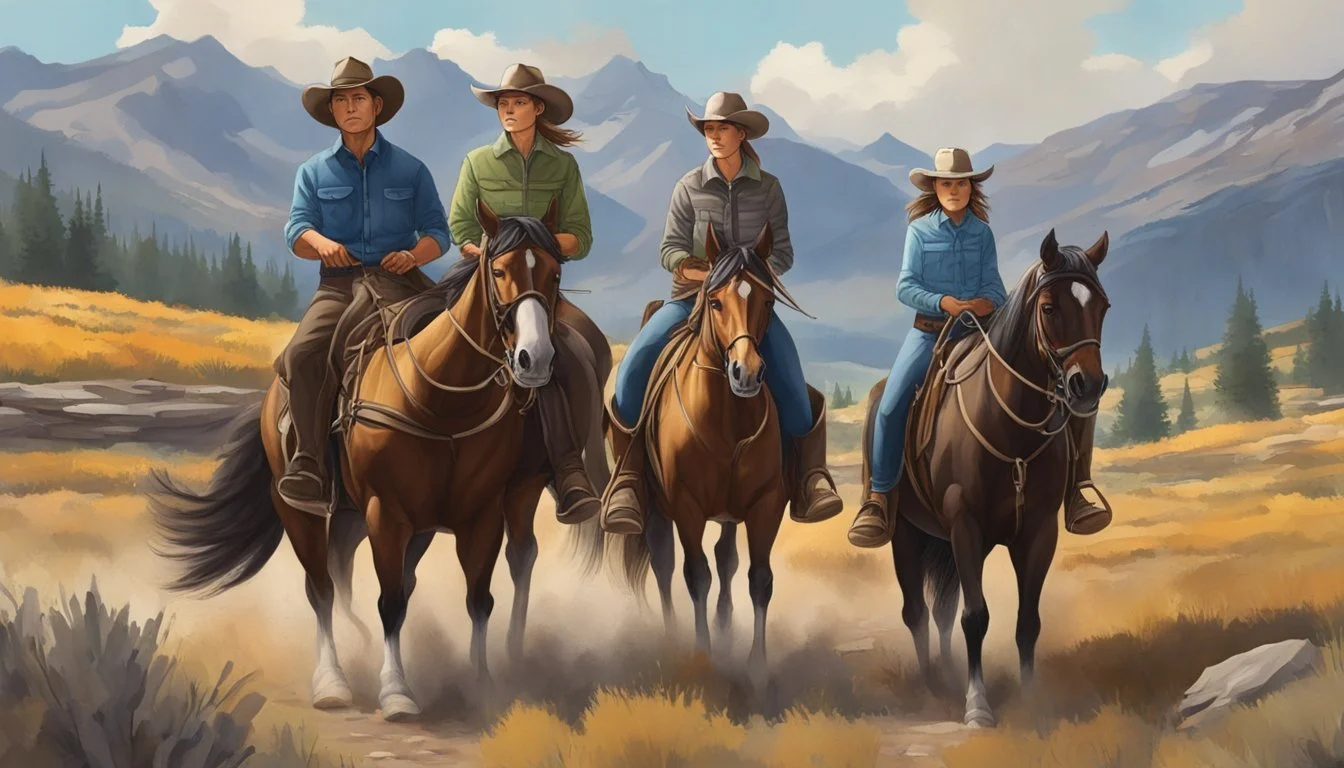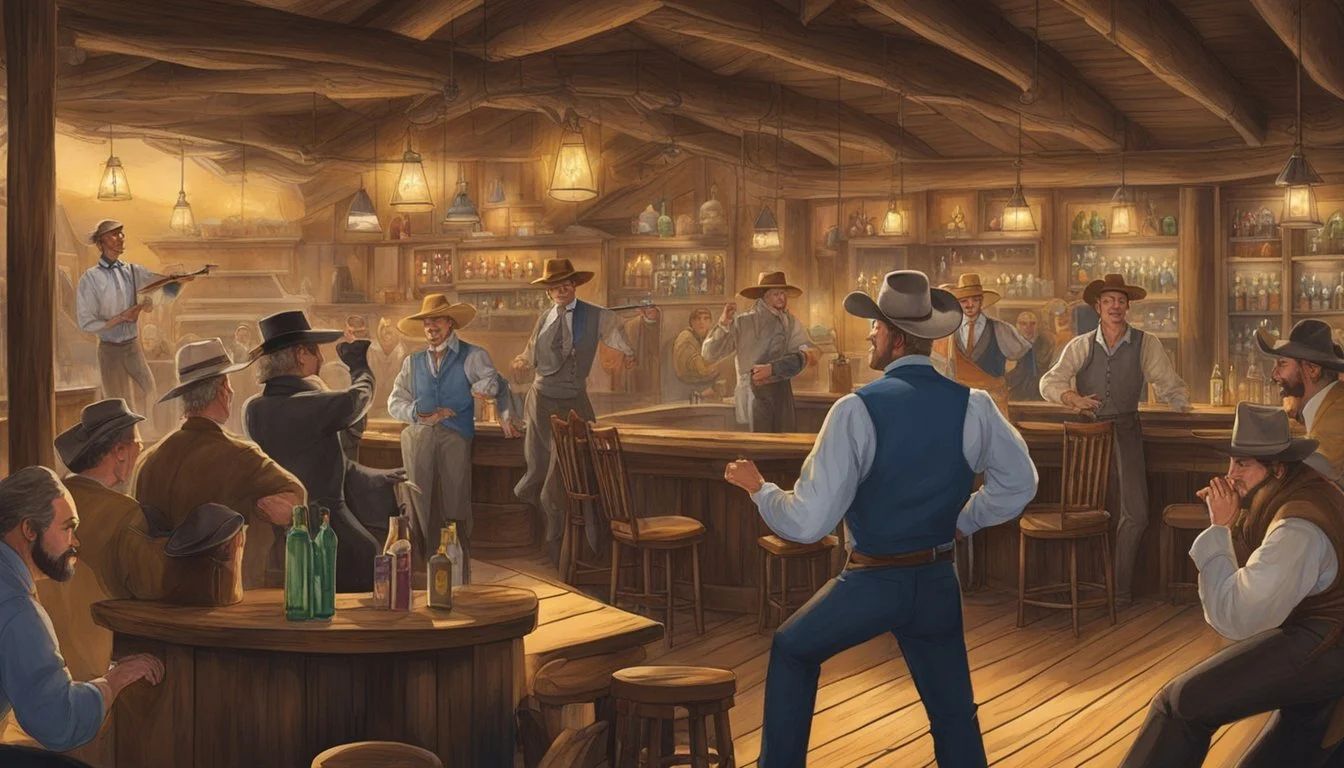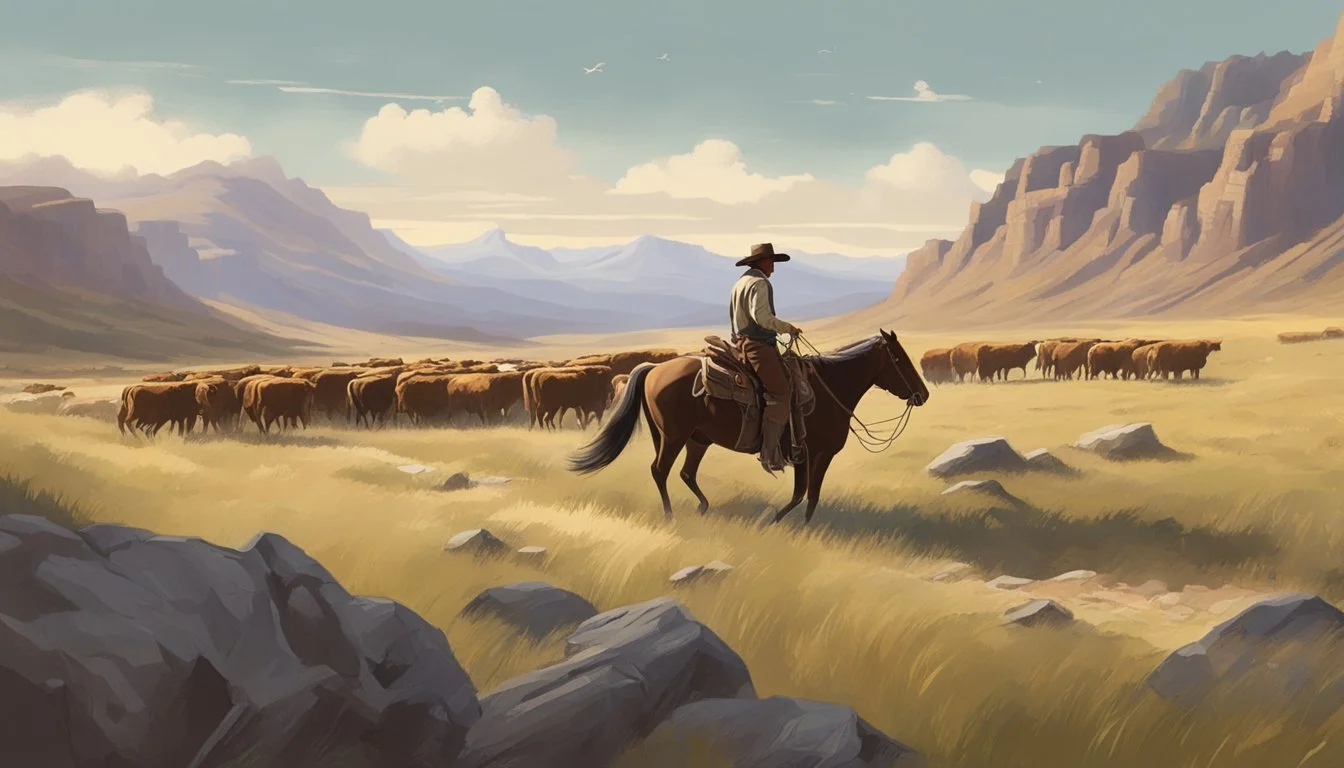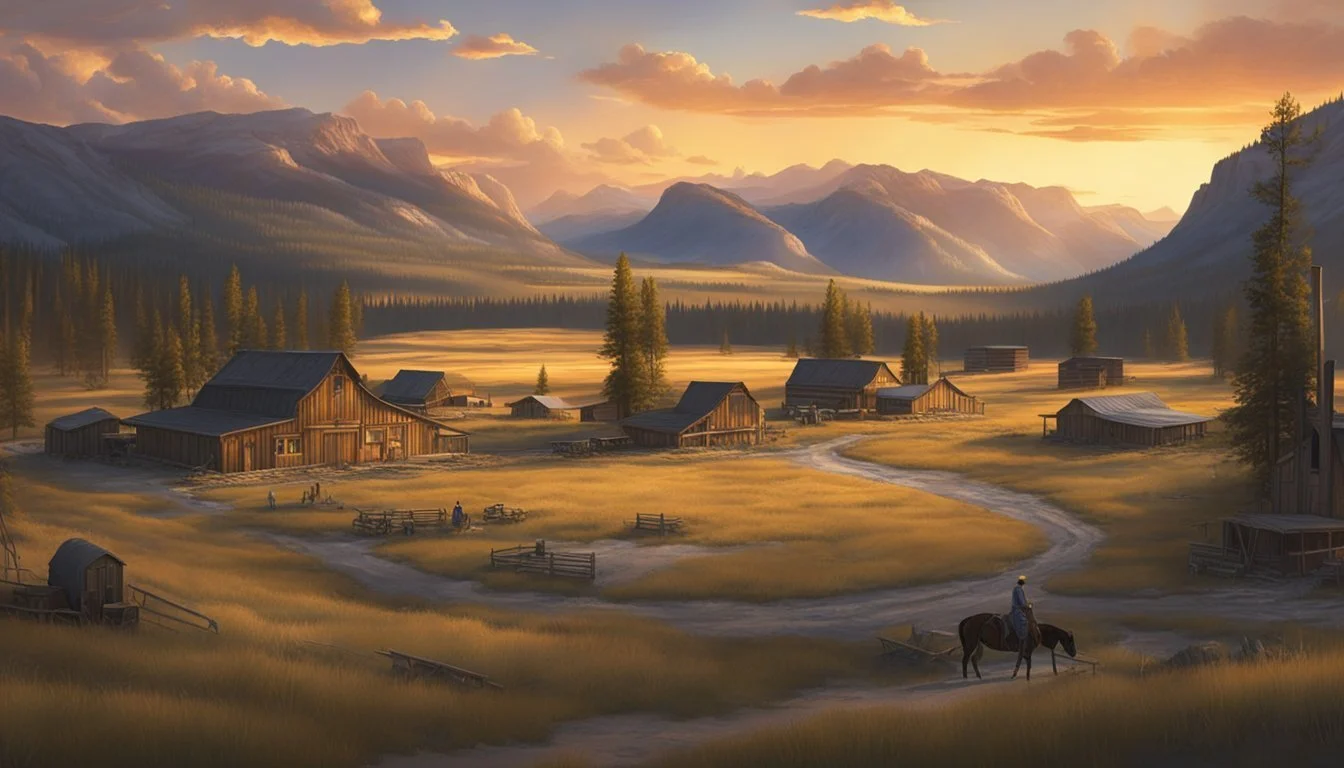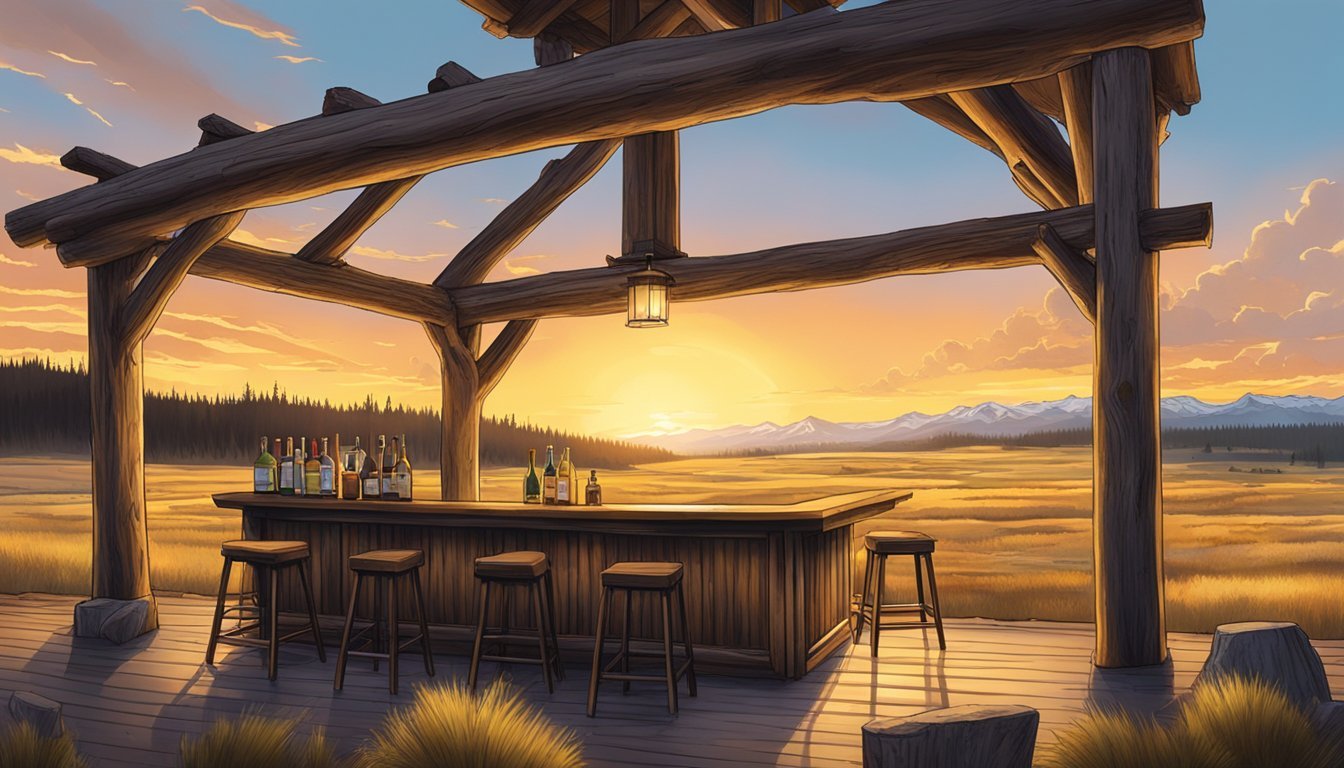Secrets of Bar M Ranch Yellowstone Unveiled in Riveting New Season
The Bar M Ranch is a neighboring property featured in the hit television series Yellowstone. While not as prominent as the Dutton's Yellowstone Ranch, the Bar M plays a role in the show's complex web of ranching politics and interpersonal dynamics.
The Bar M Ranch is known for its authentic cowboys, who occasionally cross paths with the Yellowstone crew in local establishments. These interactions provide opportunities for both tension and camaraderie, highlighting the shared culture and challenges faced by modern ranchers in Montana.
The Bar M's presence in Yellowstone serves to expand the show's portrayal of ranch life beyond the Dutton family's borders. By including neighboring properties like the Bar M, the series creates a more realistic and nuanced depiction of the ranching community, adding depth to its exploration of land use, tradition, and the changing American West.
The Dutton Family Saga
The Dutton family's journey spans generations, from their pioneering roots to their modern-day struggles to maintain control of their vast Montana ranch. Their saga is one of perseverance, conflict, and unwavering dedication to their land and legacy.
Origins in '1883'
James and Margaret Dutton lead their family westward in search of a new life. They face numerous hardships on the Oregon Trail, including disease, harsh weather, and conflicts with Native Americans.
The Duttons eventually settle in Montana, establishing the foundation of what will become the Yellowstone Dutton Ranch. This expansive property becomes central to the family's identity and future conflicts.
James and Margaret's determination sets the tone for future generations. Their son John Dutton I inherits both the land and the fierce loyalty to it, shaping the family's trajectory for years to come.
Evolution Through '1923'
Jacob and Cara Dutton, the next generation, navigate the challenges of the early 20th century. They face the aftermath of World War I, the looming Great Depression, and severe drought conditions in Montana.
The Duttons fight to protect their land from encroaching settlers and business interests. Their struggles highlight the ever-present threat to the family's legacy and foreshadow future conflicts.
This era solidifies the Duttons' reputation as formidable ranchers and land owners. It also establishes the family's complex relationships with local Native American tribes and other powerful entities in the region.
Modern-Day Dynamics in 'Yellowstone'
John Dutton III leads the family in present-day Montana. He and his children - Beth, Jamie, and Kayce - face constant threats to their land and way of life.
Beth emerges as a fierce protector of family interests, while Jamie's loyalty is often questioned. Kayce balances his roles as a rancher and family man with his Native American wife, Monica.
The Duttons employ both legal and extralegal means to maintain control of their ranch. They navigate complex political landscapes, business deals, and personal vendettas.
John's late wife Evelyn's influence lingers, shaping family dynamics and individual motivations. The modern Dutton clan grapples with evolving societal norms while striving to preserve their traditional way of life.
Key Characters and Performers
Yellowstone features a stellar cast portraying complex characters at the center of the show's dramatic conflicts. The Dutton family and their adversaries are brought to life by acclaimed actors who embody the rugged spirit of the modern American West.
Kevin Costner as John Dutton
Kevin Costner anchors Yellowstone as John Dutton, the patriarch of the Dutton family and owner of the largest contiguous ranch in the United States. Costner brings gravitas and grit to the role of the embattled rancher fighting to protect his land and legacy.
John Dutton is a widower and father of four, struggling to maintain control of his vast empire. Costner portrays him as a man of principle, albeit with a ruthless streak when it comes to defending his interests.
His performance captures John's complexity - a loving father and respected leader who's also capable of brutal tactics to achieve his goals.
Kelly Reilly as Beth Dutton
Kelly Reilly delivers a powerhouse performance as Beth Dutton, John's fiercely loyal and razor-sharp daughter. Beth is a finance whiz who uses her business acumen and cutthroat tactics to protect the family ranch.
Reilly infuses Beth with a volatile mix of brilliance, rage, and vulnerability. Her scenes crackle with intensity, whether she's verbally eviscerating an opponent or revealing glimpses of her deep-seated trauma.
Beth's complex relationship with her father and brothers forms a core element of the show's emotional landscape. Reilly masterfully portrays Beth's inner turmoil and outer ferocity.
Wes Bentley as Jamie Dutton
Wes Bentley plays Jamie Dutton, the black sheep of the family and a Harvard-educated lawyer. Jamie's desire for his father's approval often clashes with his political ambitions, creating intense family conflict.
Bentley brings nuance to Jamie's internal struggles, portraying him as both calculating and deeply insecure. His performance highlights Jamie's conflicted nature as he navigates loyalty to his family and his own aspirations.
Jamie's actions often put him at odds with his siblings, especially his sister Beth. Bentley and Reilly's scenes together are charged with a palpable animosity that drives much of the show's drama.
Luke Grimes as Kayce Dutton
Luke Grimes portrays Kayce Dutton, John's youngest son and a former Navy SEAL. Kayce struggles to balance his responsibilities to the ranch with his commitment to his wife Monica and their son Tate.
Grimes brings a quiet intensity to Kayce, capturing his character's inner conflict between his Dutton heritage and his life with Monica on the nearby reservation. His performance conveys Kayce's strength and vulnerability as he navigates family loyalty and personal ethics.
Kayce's journey often places him at the crossroads of the show's central conflicts, with Grimes skillfully portraying his character's evolving role within the Dutton dynasty.
Gil Birmingham as Thomas Rainwater
Gil Birmingham delivers a compelling performance as Thomas Rainwater, chairman of the Broken Rock Indian Reservation and a formidable adversary to the Duttons. Rainwater seeks to reclaim the Yellowstone Ranch for his people, viewing it as stolen land.
Birmingham portrays Rainwater with dignity and determination, showcasing his character's strategic mind and deep connection to his heritage. His scenes with Costner crackle with tension as two powerful men engage in a high-stakes battle over land and legacy.
Rainwater's complex motivations and Birmingham's nuanced performance add depth to the show's exploration of land rights and cultural conflicts in the modern West.
Prominent Locations in the Series
The breathtaking landscapes and iconic settings of "Yellowstone" play a crucial role in bringing the Dutton family saga to life. From sprawling ranches to rugged valleys, these locations serve as the backdrop for the show's gripping storylines.
Dutton Ranch and Its Expanses
The Dutton Ranch, the heart of the "Yellowstone" series, is portrayed by the real-life Chief Joseph Ranch in Darby, Montana. This working guest ranch spans 2,500 acres and features the iconic log mansion seen in the show. The property's vast expanses, including pastures, forests, and mountains, provide a stunning backdrop for many key scenes.
The ranch's location near Bozeman, Montana, allows the show to capture the essence of the region's natural beauty. Viewers are treated to sweeping vistas of snow-capped peaks, rolling hills, and pristine rivers that surround the Dutton family's home.
Chief Joseph Ranch and Filming Sites
Chief Joseph Ranch serves as more than just the Dutton Ranch exterior. Its grounds host numerous filming locations, including the iconic barn, stables, and corrals. The ranch's proximity to the Bitterroot Valley allows for easy access to diverse landscapes.
Other filming sites include:
The town of Darby, Montana
Various locations in Utah's Wasatch and Summit counties
Salt Lake City for urban scenes
These carefully chosen locations help create the immersive world of "Yellowstone," blending real-world settings with the fictional narrative.
Paradise Valley and Bitterroot Valley
While the show is set in Montana's Paradise Valley, many scenes are filmed in the nearby Bitterroot Valley. This region offers a similar landscape to Paradise Valley, with its mix of rugged mountains, lush forests, and winding rivers.
Key filming locations in these areas include:
The streets of Livingston, Montana
Bozeman's historic downtown
Various ranches and natural areas throughout both valleys
The show's creators skillfully use these locations to capture the essence of Montana's natural beauty and cowboy culture. From small-town charm to vast wilderness, these valleys provide the perfect backdrop for the Dutton family's struggles and triumphs.
Themes and Motifs
The Bar M ranch in Yellowstone explores core themes of power, land, and culture. It serves as a microcosm for broader conflicts and values that shape the modern American West.
Power Struggles and Land Ownership
The Bar M ranch sits at the center of intense power struggles over land ownership. Ranchers face constant pressure from developers and corporations like Market Equities seeking to acquire their property. Conservation easements become a key tool for preserving ranch lands.
Landmen play a pivotal role, negotiating deals between ranchers and interested buyers. The show highlights the complex legal and financial maneuvers involved in these high-stakes land battles.
Bar M's owners must navigate threats to their way of life from multiple angles. Their fight represents broader tensions between rural traditions and urban expansion in the West.
Conflict with Indigenous Communities
Relations between the Bar M ranch and the neighboring Broken Rock Indian Reservation are fraught with historical and contemporary conflict. Land disputes stemming from broken treaties and forced relocation remain unresolved.
The show explores how ranchers and indigenous peoples compete for limited resources like water rights. Cultural misunderstandings and prejudices further complicate interactions between the two communities.
Bar M's storylines often touch on efforts at reconciliation and cooperation, while acknowledging the deep-rooted nature of these conflicts. The complex dynamics offer no easy solutions.
The Essence of Cowboy Culture
Bar M ranch embodies the enduring spirit of cowboy culture in the American West. The daily rhythms of ranch life - rounding up cattle, training horses, maintaining fences - take center stage.
Cowboys on the ranch demonstrate key values like self-reliance, toughness, and a strong work ethic. The show portrays both the romantic allure and harsh realities of the cowboy lifestyle.
Traditional skills and knowledge passed down through generations of ranchers prove vital to Bar M's survival. Yet the culture also evolves to face modern challenges in a changing world.
Narrative and Story Development
The Yellowstone series continues to captivate audiences with its intricate storytelling and character development. Its narrative expands beyond the main series into prequels that enrich the Dutton family saga.
Yellowstone Season 5 and Beyond
Season 5 of Yellowstone intensifies the drama surrounding the Dutton family. John Dutton's role as Montana's governor introduces new political tensions. Beth's aggressive business tactics escalate conflicts with Market Equities. The ranch faces increasing threats from external forces.
Character arcs deepen, with Jamie's complex relationship with his biological father and adopted family taking center stage. Kayce and Monica's storyline explores themes of family and cultural identity. The series maintains its blend of modern Western elements with high-stakes power struggles.
As the show approaches its finale, storylines converge towards a climactic resolution of long-standing conflicts.
Prequel Series Contributions
The prequels 1883 and 1923 expand the Yellowstone universe, providing historical context to the Dutton legacy. 1883 chronicles the family's arduous journey westward, establishing the foundation of their ranch empire. It explores themes of frontier survival and the American dream.
1923 bridges the gap between the two series, depicting the Duttons during Prohibition and the Great Depression. It adds layers to the family's history, showcasing their resilience through economic hardships and changing social landscapes.
These prequels enrich the main series by revealing the origins of the Duttons' deep connection to their land and their unwavering determination to protect it.
Cultural and Social Impact
Yellowstone has profoundly shaped modern Western entertainment and garnered a dedicated following. The show's influence extends beyond television, impacting fashion trends and sparking renewed interest in ranch life.
Fan Base and Viewership
Yellowstone boasts a large and passionate fan base. The Paramount Network series consistently attracts millions of viewers for each episode. Fans actively engage on social media platforms, discussing plot theories and character developments. The show's popularity has led to the creation of online communities where viewers share their love for the series.
Yellowstone's audience demographics skew predominantly white, reflecting the show's themes and setting. This has sparked discussions about representation in media and the portrayal of rural American life. Despite its narrow demographic appeal, the series has managed to become a cultural touchstone for many viewers.
Influence on Modern Western Genre
Yellowstone has revitalized the Western genre for contemporary audiences. The show blends traditional Western elements with modern storytelling techniques, creating a unique viewing experience. This approach has inspired other productions to explore similar themes and settings.
The series has influenced fashion trends, with viewers embracing Western-inspired clothing and accessories. Cowboy hats, boots, and ranch wear have seen increased popularity since the show's debut. Yellowstone's success has also boosted interest in ranch life and Western culture, leading to increased tourism in areas where the show is set or filmed.
Production and Filming Insights
"Yellowstone" blends stunning visuals with authentic ranch life through meticulous production. Taylor Sheridan's creative vision and expert cinematography bring the rugged Montana landscape to life on screen.
Creative Vision of Taylor Sheridan
Taylor Sheridan, the show's creator, draws from his Texas roots to craft a realistic portrayal of modern Western life. His hands-on approach includes writing, directing, and even performing stunts. Sheridan insists on authenticity, often casting real cowboys alongside professional actors.
The production team works closely with local ranchers to accurately depict ranch operations. This attention to detail extends to costumes, props, and set design. Sheridan's commitment to realism creates a immersive experience for viewers, capturing the essence of the American West.
Cinematography and Setting
"Yellowstone" showcases breathtaking landscapes through expert cinematography. While set in Montana, filming locations span Utah and Montana. The Chief Joseph Ranch in Darby, Montana serves as the iconic Dutton Ranch.
Cinematographers use wide shots to capture sprawling vistas and intimate close-ups for emotional scenes. Natural lighting enhances the rugged beauty of mountain ranges and open prairies. The production team faces challenges like unpredictable weather and remote locations.
Filming often occurs in actual working ranches, adding authenticity to scenes. The Governor's Mansion scenes utilize the historic Daly Mansion in Hamilton, Montana. This blend of real locations and cinematic techniques creates the show's distinctive visual style.
Music and Soundtrack
The music and soundtrack of "Yellowstone" play a crucial role in setting the tone and enhancing the storytelling. Country and western tunes feature prominently, creating an authentic atmosphere for the show's Montana ranch setting.
Lainey Wilson's Contribution
Lainey Wilson, a rising country music star, has made a significant impact on the "Yellowstone" soundtrack. Her songs "Watermelon Moonshine" and "Smell Like Smoke" have been featured in the show's fifth season. Wilson's music captures the essence of the modern western lifestyle portrayed in the series.
The artist's involvement extends beyond providing songs. Wilson joined the cast in season 5, playing the character of Abby, a musician. This dual role as both performer and actor has strengthened the connection between the show's music and its narrative.
Music's Role in Storytelling
The soundtrack of "Yellowstone" serves as more than just background noise. It actively supports the storytelling, often reflecting characters' emotions or foreshadowing plot developments. Songs are carefully selected to complement specific scenes and enhance the viewing experience.
Artists like Chris Stapleton, Whiskey Myers, and Ryan Bingham have contributed tracks that resonate with the show's themes of family, loyalty, and the struggles of ranch life. The music helps create a rich, immersive world that draws viewers deeper into the Dutton family saga.
Notably, cast member Ryan Bingham, who plays Walker, also contributes his musical talents to the show. This integration of real-world musical ability into character development adds an extra layer of authenticity to the series.
Expanded Universe
The Yellowstone franchise has grown beyond the original series, introducing new ranches and time periods that expand the Dutton family saga. These spin-offs provide fresh perspectives on the family's history and future.
Four Sixes Ranch
The Four Sixes Ranch, also known as the 6666 Ranch, is a key location in the Yellowstone universe. This real-life Texas ranch plays a significant role in the show's expanded storylines. Jimmy Hurdstrom's character arc involves his time at the 6666, hinting at potential spin-off opportunities. The ranch's inclusion broadens the geographical scope of the Yellowstone world, moving beyond Montana to explore the rich ranching culture of Texas.
Bar M Ranch and Other Spin-Offs
The Bar M Ranch appears to be another addition to the Yellowstone universe, though details about its exact role are limited. It may be based on a historical ranch in eastern Oregon or Texas. Yellowstone's creator, Taylor Sheridan, continues to develop new spin-offs set in different time periods. The prequel series 1883 delves into the Dutton family's early history, while other planned spin-offs aim to explore various eras of the family's legacy. These expansions offer fans a deeper understanding of the Dutton dynasty and the evolution of ranching in the American West.


